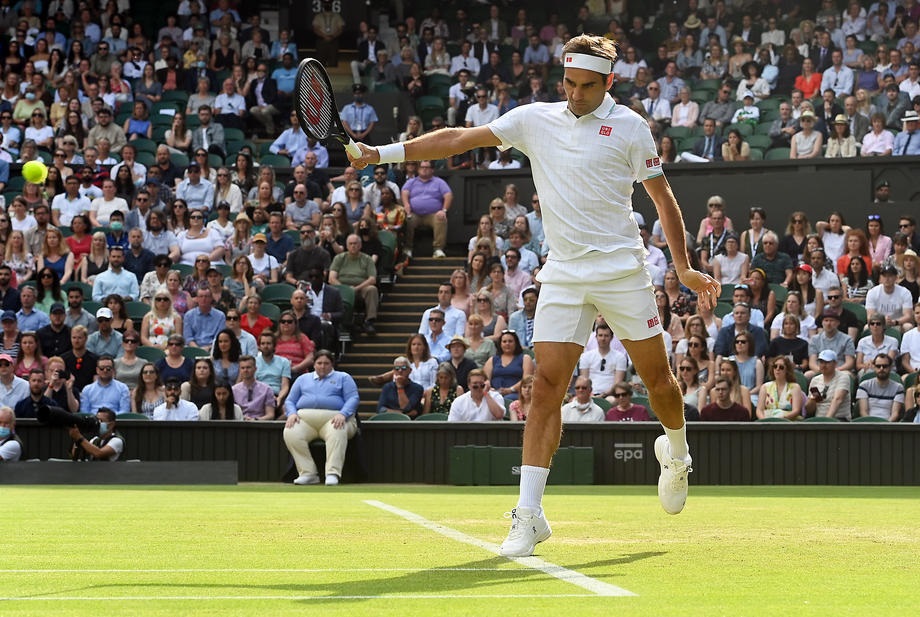- Ricky’s picks for this week’s ATP 500 in Rotterdam
- ABN AMRO Rotterdam Open Draw and Schedule of Play for Wednesday, February 5, 2025
- Former No. 1 Simona Halep Announces Her Retirement At Age 33
- ABN AMRO Rotterdam Open Draw and Schedule of Play for Tuesday, February 4, 2025
- Petra Kvitova Will Launch Her Comeback in Austin
- Rotterdam ATP 500 draw: Alcaraz, Medvedev, Rublev headline stacked field
- ABN AMRO Rotterdam Open Qualifying Draw and Schedule of Play for Saturday, February 1, 2025
- Taylor Fritz to Play Opening Match February 13 in Historic Delray Beach Open Three-Peat Quest
- Stars Join Forces for Eisenhower Cup Return to Indian Wells on March 4
- Ken Thomas Broadcasting from Georgia’s Rome Tennis Open
- Solinco Launches All-New Whiteout V2 Racquet
- Stringlet: Serving Up Tennis Inspiration With A Twist
- Davis Cup qualifying to feature Brazil vs. France and Spain vs. Switzerland
- 2025 US Open Expands to Sunday Start
- Tennis Channel To Broadcast U.S. Davis Cup Qualifier vs. Tawain
US Open Tennis 2024 Is Over Analyst Alix Ramsay Shares Her Ramblings
- Updated: September 8, 2024

And so the transition is all but complete: as the grand slam season comes to an end, the champions of 2024 are Jannik Sinner and Carlos Alcaraz, the two young men tipped by everyone as the next serial major champions. Between them they have the Australian and US trophies (Sinner) and the French and Wimbledon (Alcaraz). Ah, it all seems so seamless. And yet…..
Sinner won his first US Open title – there will be more – with a 6-3, 6-4, 7-5 win over Taylor Fritz, the first American finalist since Andy Roddick in 2006. Fritz, bless him, tried as hard as he could but he could barely lay a glove on the world No.1. Sinner was in charge of the first set; he repelled all intruders in the second and even when Fritz got his nose in front in the third, the Italian would not let him pass. There is a reason why Sinner is at the top of the rankings ladder by a healthy margin.
On the women’s front, Aryna Sabalenka’s straight sets – but never straight forward – win over Jessica Pegula to win her first US title was an enthralling watch but, also, a moment of redemption for the Belarusian.
She had been overwhelmed by the moment and the crowd last year as she took on Coco Gauff in the final; this time, facing another American, she did what she does best and crushed her forehand (while blocking out the raucous noise in the stadium) to claim her first US title. Added to her Australian Open title in January, that makes her the best hard court player in the world in 2024 (and maybe beyond).

After last year’s tearful exit – and two previous semi-final defeats – Sabalenka had shown that she has bigger cajónes than many on the men’s tour. Indeed, she has a bigger forehand than many of the blokes. As she approached the final, her average topspin forehand speed was 80.2 mph. Alcaraz came in at 78.9 mph and Sinner offered up a wimpy 75.8 mph. And now she was the champion.
We all knew that we were in the “transition phase” after Roger Federer and Andy Murray had retired and Rafa Nadal was approaching his final match but no one was expecting it to be quite this chaotic.
The Open began with a drugs story swirling around the Sinner camp. That not one but two positive tests should have been returned by the squeaky clean, terribly polite and awfully low key Jannik came as a bolt from the blue. But that, in the twinkling of an eye, those tests should have been dealt with and dismissed as being no fault of the world No.1 was what irked his rivals and peers. Needless to say, his reception in the locker room was cool at best.
No one here is suggesting that Sinner is guilty of anything (other than hiring a rather careless physio) but the system needs overhauling. He tested positive for the steroid Clostebol in March (his physio used a cream containing the substance to treat a cut on his own hand and then gave Sinner a full body massage which caused the steroid to enter Sinner’s system). Sinner was suspended for a few days in April but allowed to return to work as soon as he had explained to the Internation Tennis Integrity Authority exactly what had happened.
Other less famous, less wealthy players have lost their careers in the same or similar circumstances but they did not have the financial heft or the celebrity clout to have their cases examined quickly. Without a big legal team behind them, they ended up with long suspensions and found no way back.
Anyway, from this inauspicious start, we hurtled towards a former champion who seems to have lost his way, pausing only to rubberneck at another former champion who appears never to have found her’s in the first place, and the skidded to a halt at the collapse of one of the greatest players of all time.
Carlos Alcaraz, the champion of Roland Garros and Wimbledon and the runner up at the Olympics, fell apart in the second round against Botic van de Zandschulp and did not know why. As the error count rose and he found himself in a deeper and deeper hole, he could not find an answer to the problem.
“Instead of taking steps forward, I’ve taken steps back mentally. I can’t understand the reason why,” he said. “I’m not well mentally, not strong. I don’t know how to manage the difficult moments, and that’s a problem for me.”

As he headed off to try and clear his head he might have bumped into Emma Raducanu. She came to New York in good spirits and was promptly sent packing in the first round by Sophia Kenin. Opting not to play any lead-in tournaments, she simply was not match tight and, against a battler like Kenin, she paid the price. Since winning the title in Flushing Meadows three years ago, she has not won a match there since. She left tearfully promising to learn from her mistakes. Again.
Coco Gauff, meanwhile, was trying to defend her title and for three rounds was making a reasonable fist of it. And then she bumped into Emma Navarro and her serve imploded. She offered up 19 double faults, 11 of them in the third set.
“Mentally and emotionally I gave it my all,” Gauff said. “Of course, there were things execution-wise, where I wish I could serve better. I think if I would have done that, it would have been a different story for me in the match.”
Or, in football parlance: if the ball had gone in the net, it would have been a goal. So, it is back to the drawing board for Coco and her serve.

And then there was Novak Djokovic. His superhuman efforts to race back from knee surgery 24 days before the start of Wimbledon were remarkable. To then reach the Wimbledon final was incredible. But to go on and win the one title that had eluded him for 16 years – Olympic gold – was beyond the stuff of dreams. No wonder, then, that he was emotionally and physically wrecked by the time he got to the Arthur Ashe stadium. He felt “out of gas” from the moment he arrived and was utterly spent once Alexei Popyrin had splattered him in four sets in the third round.
It has been a funny old tournament but, eventually and after many an upset and drama, the right people won: the ones who had the talent, the belief and the chutzpah to seize the day. That’s what sport – and transition – is all about.






